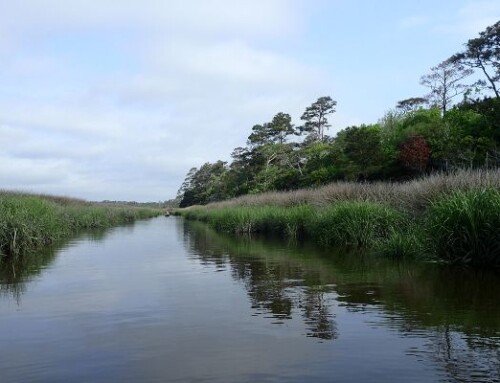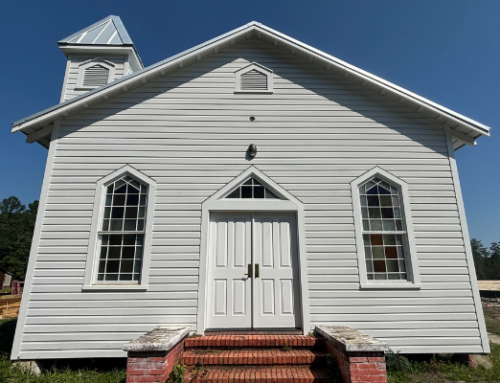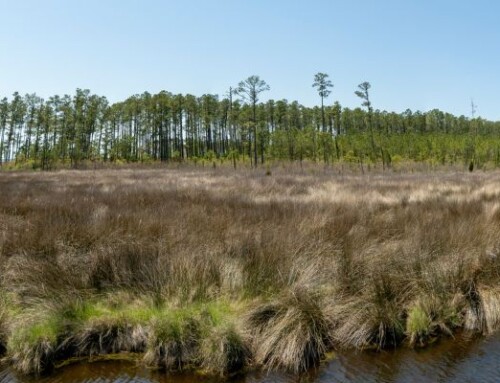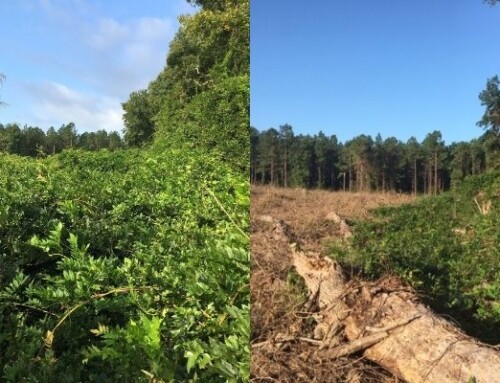
This article was originally published as on August 14th, 2018 by the Star News Online, available here.
By Ben Steelman StarNews Staff
NAVASSA — The N.C. Coastal Land Trust has formed a partnership with a residents group in Navassa to save a local landmark of Gullah-Geechee heritage.
The land trust has already paid to have a tarp installed on the roof of Reaves Chapel to prevent further water damage. Now it is working with the nonprofit Cedar Hill-West Bank Heritage Foundation to help the group acquire title to the former AME church and renovate the building for community use.
“The partnership is important because of our more recent focus on community conservation and serving people that have not traditionally benefited from land trust work,” said Jesica Blake, director of stewardship and community conservation for the N.C. Coastal Land Trust. “We have professional expertise in working with and acquiring complicated projects.”
Earlier, the land trust worked with the Town of Navassa to obtain a grant from the Z. Smith Reynolds Foundation to preserve Gullah-Geechee culture in the area.
“Gullah” and “Geechee” refer to the distinctive culture of West Africans sold into slavery in the coastal and tidewater regions of the South Atlantic coast. This culture is reflected in rice cultivation, the focus of many antebellum plantations in Southeastern North Carolina, and in a distinct creole dialect, called Gullah, preserving many West African linguistic patterns.
Dating from the 1880s, Reaves Chapel was one of the oldest AME churches in the region, tracing its roots to the Cedar Hill Mission, formed by the former Methodist Episcopal Church. It served former slaves connected to the former Cedar Hill Plantation, located along Indian Creek in eastern Brunswick County.
Originally located near where Indian Creek poured into the Cape Fear River, Reaves Chapel was moved around 1911 to its present location near the junction of the old Cedar Hill and Mount Misery roads, about three miles north of Leland. The church building was pulled by teams of oxen and rolled along by logs, according to Navassa Mayor Eulis Willis, many of whose relatives worshiped at Reaves Chapel.
The church was named for Edward Reaves, who donated the land for the new church site.
Reaves Chapel was a center for the local community, said Al Beatty, president of the Cedar Hill-West Bank Heritage Foundation. If someone died in the neighborhood, the Reaves Chapel bell, still in place, would toll.
The last members of the congregation died off, and the building has been abandoned for more than a dozen years. Willis and others organized the heritage foundation’s forerunner in 2009, in large part to pursue saving the building. In 2015, the Historic Wilmington Foundation places Reaves Chapel on its list of “Most Threatened Historic Places” in the region.
“It’s had its leaps and bounds and its ups and downs,” Willis said.
Willis said he thinks local officials are “on the verge” of reaching a deal with the property’s owner to gain title of the property. “We know we have to do something about the foundation, as well as repairing the roof,” Beatty said.
*************






